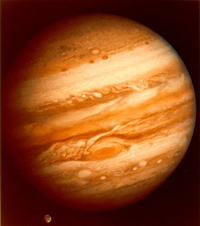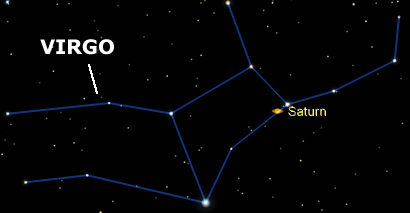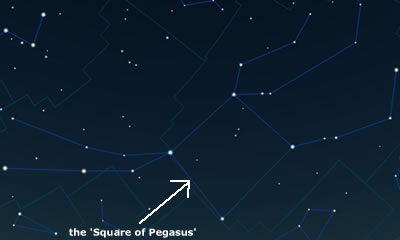Posts Tagged ‘planet’
Jupiter
It has now been a whole year since I received my telescope for my 30th birthday, and I have learnt so much in that time!
It was exactly a year ago that I found out which bright light in the sky was Jupiter so I thought that I would go out and view it again, now that I have had more experience with the telescope.
I wasn’t disappointed either as I managed to home in on the Red Planet pretty quickly and got it into focus using several lenses with minimal trouble. What I saw was again brilliant and I could make out four of Jupiter’s moons beside it. In fact, whilst I was looking at the planet, one of the moon’s popped out from behind the right hand side of it, which I thought was great! 😉 I could also make out the swirling colours of Jupiter when I used the highest magnification lens that was available to me.
Overall, I was very pleased with the evening’s Astronomy and it showed that I have definitely learnt loads about the night sky in the past year.
N.B. Jupiter is currently very bright in the Sky and is one of the first objects that you can see during and after dusk. You can’t miss it! 😉
The photograph of Jupiter below was taken by the Voyager 1 Spacecraft when it was still more than 25 million miles away on January 24th 1979. The object on the bottom left is Ganymede which is Jupiter’s largest Moon.
Saturn in the Virgo Constellation
For the past few weeks Saturn has been in a great position in the sky to view through either binoculars or telescopes. It is currently in the Eastern Sky within the Constellation of Virgo.
I had been trying for a long time to get a good view of the planet via my telescope, but had been scuppered a lot of the time due to bad weather and haze in the sky in the evenings. The sky has also been brighter later in the evenings now, so I have had to go out later and later each night to view it. When you have an energetic 2 year old, this is a difficult task as by that time of night, you are shattered!! 😉
Eventually, after many attempts, I managed to get a great view of the planet and could very clearly make out the rings around it. It was an amazing site and I was very pleased that I managed to get my telescope to focus in correctly.
Some of you may be interested to know that the rings of Saturn are so big that they would nearly reach all the way to the Moon from the Earth, and the planet is so dense that it would float on an ocean. Amazing. Saturn also has 60 moons with the most famous being Titan, but unfortunately I was unable to spot any of these through the telescope, though I will try again when the weather is better!
If you have any thoughts or statistics about Saturn, please leave them as comments to this post as I would find any other information very interesting indeed! Thanks!
Pegasus, Jupiter and Polaris
I had to wait a whole week until the weather was good enough to go out and use the telescope again. This time I went out to try and see the brightest star in the sky, but I still didn’t know fully how to use the telescope so it was a bit hit and miss. I didn’t realise that I had to line up the viewfinder with the telescope beforehand, during daylight hours. So when it came to trying it in the dark, it was very difficult to find the correct direction. After several attempts, I finally locked on to the star but still couldn’t see it very well.
Having spent some time trying to view it through a telescope and binoculars, I decided to go and try and find out what it actually was. After searching through several sites, my wife found that the star was actually Jupiter and during the month of October, it was the brightest it will be for a long time (see link in the right hand side column). Whilst we were looking up about this, I learnt to find the ‘Square of Pegasus’ and where the North Star (Polaris) was in the sky. This was useful as Jupiter is situated just below the ‘square’ which made it easy to find. What made this extra relevant was that the ‘Square of Pegasus’ was right in front of us in the sky (North East) when we stood in our back yard. This made it really easy to pinpoint other stars, planets and constellations, and we think we pinpointed Neptune further to the East.
(image taken from ‘The Sky X First Light Edition’)
Armed with this new information we went outside to have another look but, unfortunately, it had started to cloud over so we were unable to use the telescope anymore. We did attempt to use the binoculars and thought we had zoomed straight in to Jupiter and saw a moon or two orbiting it, but we aren’t sure as the image kept changing. We think the binoculars are a bit dodgy (they were only very cheap!) so we can’t be 100% sure of what we saw. Will need to buy or borrow some binoculars to make sure.
So it wasn’t the best viewing but I did at least learn a lot of things about the Sky and its stars and constellations, and wherever I am now, I know how to find Jupiter as long as I can find the ‘Square of Pegasus’ first.
Time: 19:45 – 21:30, Longitude: 50.435423, Latitude: -4.093217, Viewing: North East



